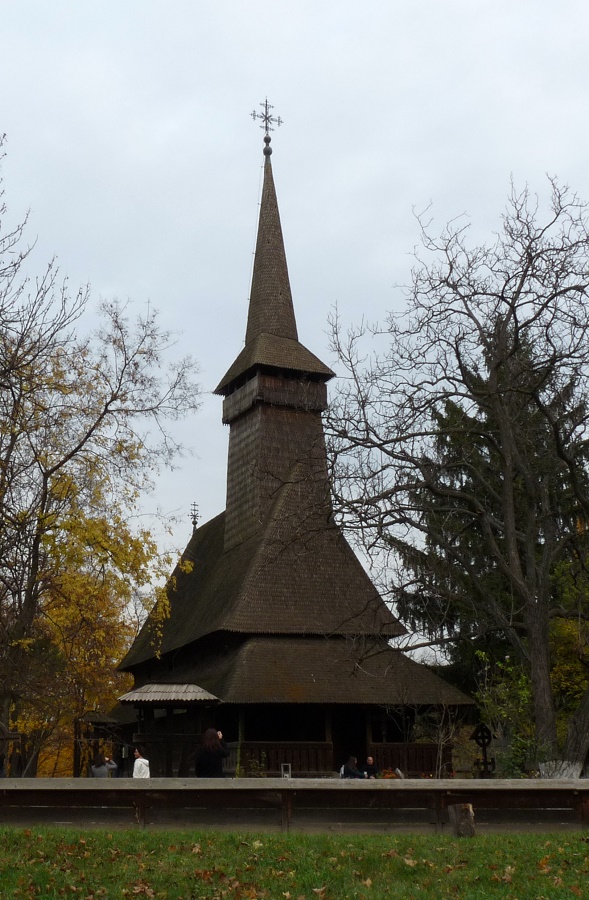What do you know about Romania? Six Bucharest museums to help you sharpen up

For those looking to get a better feel of the country’s traditions, art and history, Bucharest museums come with a plentiful offer. There are more than 40 museums and memorial houses in Romania’s capital, presenting a wide range themes, from the history of local firefighters to ancient maps. Below is a selection of places that give visitors worthy insights into the local culture.
Walk the lanes of a traditional Romanian village
A unique way of discovering traditional local culture awaits visitors at the Dimitrie Gusti National Village Museum in Bucharest. On the shore of the Herastrau Park, the museum offers visitors the opportunity to see an open-air village, featuring constructions and artifacts dating back from the 17th century to the 20th one, all of them representative of the most important ethnographic areas of Romania.
 The museum was designed to show visitors the reality of village life, as it was or is lived by the Romanian peasant. At the time of its opening, it featured 33 authentic complexes, transferred from the researched villages: houses with annexes, a church, technical installations and fountains. If you cannot make it to the Maramures area of Romania anytime soon, a visit to this museum can (almost) make up for it. One of the oldest constructions that can be admired here is a 1722 wooden church from Dragomiresti, Maramures county. Read more in this article: Our Bucharest walks: the Village Museum
The museum was designed to show visitors the reality of village life, as it was or is lived by the Romanian peasant. At the time of its opening, it featured 33 authentic complexes, transferred from the researched villages: houses with annexes, a church, technical installations and fountains. If you cannot make it to the Maramures area of Romania anytime soon, a visit to this museum can (almost) make up for it. One of the oldest constructions that can be admired here is a 1722 wooden church from Dragomiresti, Maramures county. Read more in this article: Our Bucharest walks: the Village Museum
Get the lowdown on the Romanian peasant life
The Romanian Peasant National Museum, whose history goes back to 1908, has a rich collection reflecting the country’s history in national identity construction, and a time when city inhabitants were interested in peasant culture as a reference point for national identity. Some 90,000 items are gathered in collections of ceramics, clothing, wooden items, religious items, customs and many more. The museum regularly organizes fairs which gather craftsmen and local producers, so visitors can also get a hands-on taste of traditional culture. The permanent exhibition cannot be visited currently as the building is closed for consolidation works but several halls hosting temporary exhibitions are open to the public.
Trace the footsteps of the Romanian royal family
In one of the capital’s oldest, and recently coolest, neighborhoods, you can find a 19th century palace surrounded by a beautiful garden. The palace hosts the Cotroceni National Museum, while an adjoined wing serves as the headquarters of the Romanian presidency. An art collection of local and international painting, sculpture, religious art, decorative art and furniture, and the story of how it links to the Romanian royal family is ready for visitors of this place. You can also visit here the Cotroceni church and a permanent, medieval history exhibition. Read more about it in this article: Discover Bucharest: Green and quiet - a visit to the Cotroceni museum
The National History Museum of Romania is home to over 3,000 pieces, belonging to various civilizations that inhabited, in time, Romania’s territory. Ranging from jewelry to religious items, they go back far in time to the Neolithic age. One highlight are the 2000 year-old Dacian bracelets, discovered in the area of Sarmisegetuza. The bracelets only recently joined the museum’s collection, after being recovered from treasure hunters several years ago. Reproductions of fragments of Trajan’s Column, a Roman column in Rome commemorating emperor Trajan's victory in the Dacian Wars, can also be found here.
Contemplate the Romanian art masterpieces
Artistic items dating back to the 14th century and speaking of the artistic particularities of the Romanian provinces up to the 19th century make up a large part of the collection of the National Museum of Art of Romania. The museum’s Gallery of Modern Romanian Art illustrates the history of Romanian art from the mid - 19th century to the end of the 1970s and features works by important Romanian names such as Nicolae Grigorescu, Stefan Luchian, and Constantin Brancusi. While at the museum, you can also visit the European Gallery, hosting art by masters such as Domenico Veneziano, Tintoretto, Bronzino, Lucas Cranach the Elder, Rubens, Brueghel the Younger, Rembrandt, El Greco, Monet, Signac, and Rodin.
... and get a feel of the contemporary vibe
The National Museum of Contemporary Art is located in a wing of the People’s Palace, which also hosts the Romanian Parliament. It was inaugurated in 2004 and accommodates a variety of contemporary works, ranging from painting and sculpture to video and digital art. It also has an extensive collection of negatives and photographs, with images of works by contemporary artists.
The Grigore Antipa National Museum of Natural History has a heritage of about 2 million specimens of invertebrates and vertebrates (current and fossils) originating from Romania and from various other world geographical areas. Visitors can see here collections of paleontology, ethnography and anthropology, geology or compared anatomy.
A skeleton of the Deinotherium gigantissimum, a prehistoric relative of modern-day elephants, discovered on Romania’s territory, is one of the most valuable specimens in the museum’s collection, which also includes skeletons of the gigantic stag (Megaceros giganteus), the cave bear (Ursus spaeleus), and the shell mammal (Glyptodon typus).
editor@romania-insider.com

















